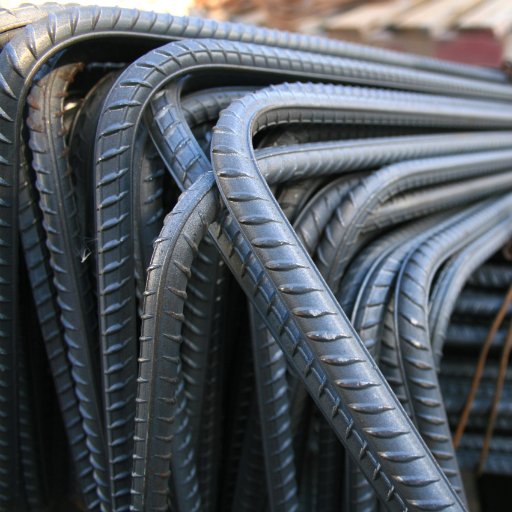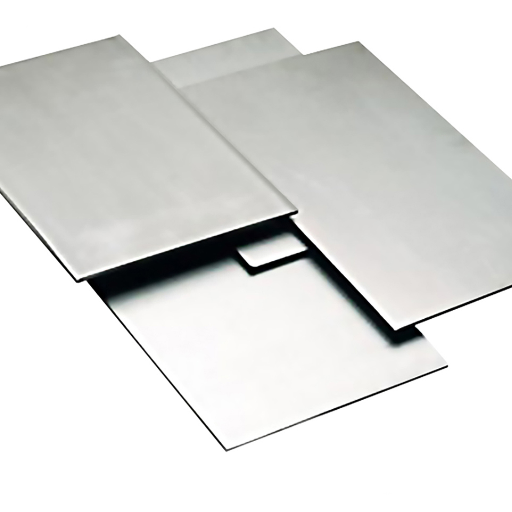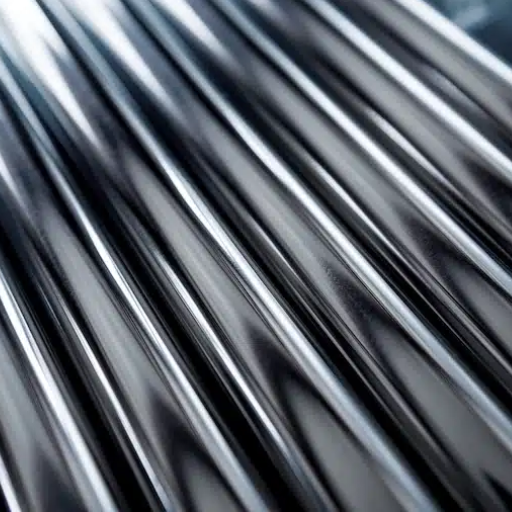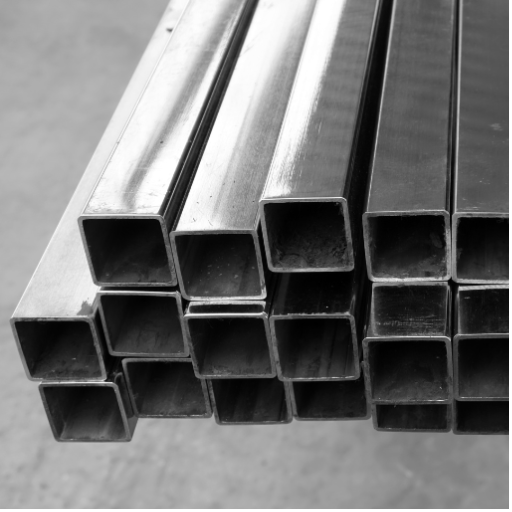Since its corrosion resistance, durability, and corrosion resistance are composite gives it an edge in the industrial applications market, 304 stainless steel round bar is one of the most commonly used and versatile types of steel. This guide will follow the key A304 stainless steel round bar properties, its manufacturing processes, and some common applications for it. Moreover, we will examine its advantages over other stainless steel grades and some practical problems in using them in different industries. This article will detail the reasons 304 stainless steel round bars are preferred in construction, automotive, food processing, chemical engineering, and many other sectors.
What is a stainless steel round bar?

A stainless steel round bar is a solid cylinder of stainless steel frequently used for industrial and commercial purposes. Its shape and high-strength properties facilitate machining, structural frameworks, and component manufacturing. Obtained by extrusion or hot rolling, stainless steel round bars are highly resistant to corrosion, durable, and mechanically stable, even in severe conditions or under substantial weight. Round bars are available in various grades including the ever versatile 304 stainless steel grade whenever the market demands.
Features of 304 stainless steel round bars
304 stainless steel round bars are renowned for their versatility and outstanding performance across a variety of applications. Key features include:
- Corrosion Resistance
One of the most notable characteristics of 304 stainless steel is its exceptional corrosion resistance. Thanks to its high chromium and nickel content, it can withstand exposure to moisture, acids, and a variety of chemicals, making it suitable for use in marine environments, chemical processing, and food industries.
- High Strength and Durability
304 stainless steel round bars provide excellent tensile strength and durability, even under extreme conditions. This makes them ideal for structural applications, where long-term stability and reliability are required.
- Ease of Fabrication and Machinability
Due to its austenitic structure, 304 stainless steel is highly machinable and can be easily welded, formed, or cut into precise shapes without compromising its structural integrity. This reduces production time and enhances its adaptability for custom designs.
- Temperature Resistance
These bars exhibit outstanding performance in both high and low temperatures. They maintain their strength and resist oxidation at temperatures of up to 1500°F, making them effective for use in heat exchangers and other high-temperature applications.
- Non-Magnetic Properties
While being primarily non-magnetic in its annealed state, 304 stainless steel offers magnetic resistance, which is beneficial in sensitive electronic and industrial equipment.
- Hygiene and Aesthetic Appeal
With a smooth, polished surface, 304 stainless steel round bars are easy to clean and maintain, complying with stringent hygiene standards in industries such as food processing and pharmaceuticals. Additionally, their aesthetic finish makes them desirable in architectural applications.
These attributes not only make 304 stainless steel round bars a popular choice in numerous industries but also ensure their longevity and cost-efficiency across various demanding environments.
Common Applications and Industry Uses
The exceptional characteristics of 304 stainless steel round bars makes them useful in many industries. They are commonly used for structural components in buildings such as reinforcement bars and frameworks due to their strength and corrosivity. Their prominent use in the automotive industry as components of exhaust systems, bolts, and even trims further solidifies their importance.
In the food and beverages sector, 304 stainless steel is used for storage vessels, conveyor belts and utensils which all require high hygiene standards and low bacterial contamination. Similarly, pharmaceutical manufacturing takes advantage of its non-reactive surface which is smooth ensuring that critical equipment processes can remain contamination free. In the chemical industry, these bars are formed into pipes, reactors, and heat exchangers that endure extreme temperatures and harsh chemicals without degrading.
Being able to remain durable in harsh environments while also being hygienic proves why 304 stainless steel round bars are so valuable around the world.
How does it compare to other metal options?
There are numerous factors to consider when comparing 304 stainless steel to other components, such as aluminum, carbon steel, and other grades of stainless steel. First, unlike aluminum, 304 stainless steel has a greater tensile strength, can withstand higher temperatures, and is highly resistant to high-stress applications. Lastly, aluminum is more lightweight and cost-friendly; however, it cannot provide the same level of corrosion resistance and overall durability compared to 304 stainless steel.
Second, with the use of carbon steel, there are significant benefits that can be found with 304 stainless steel, which include long-term performance and improved corrosion resistance. While carbon steel requires protective coatings to avert rust, 304 stainless steel can withstand corrosive environments without the need for special treatment Before employing carbon steel, however, one must remember that these materials offer cheaper prices and easier welding capabilities.
Finally, 304 stainless steel is cheaper than 316 stainless steel and provides commendable corrosion resistance compared to other grades of stainless steel. On the other hand, 316 stainless steel is superior in resistance to harsh chemical exposure and extremely blunt environments like the ocean and marine applications due to the presence of molybdenum which is usually absent in 304 stainless steel.
In conclusion, the balance among strength, corrosion resistance, cost, and weight considerations defines the straightforward answer to which of the metals should be chosen – 304 stainless steel or other stainless steel grades.
How do the length and diameter affect the use?

A material’s functionality and its potential use cases are largely dictated by its length and diameter. Length is key to the structural strength of the material and how a load will be distributed; longer lengths may deflect or buckle under load, which means they could require extra support. In contrast, the diameter is of utmost importance for the material’s strength and the ability to sustain pressure from within or externally, like in pipes structural elements, or tension. Both dimensions aid in determining the mechanical properties of the material, how well it can join with other parts, and its efficiency in performing the expected task. The selection of these dimensions is crucial and must be made with adequate calculations to guarantee the safety of the application.
Understanding the diameter specifications
The endurance, effectiveness, and overall power of specific materials, such as pipes, rods, and even structural elements, is determined by their width, a critical factor in their endurance. Greater width, in general, improves one’s capacity to withstand internal pressure, and external loads while simultaneously resisting tensions and deformations. For instance, in piping systems, the internal diameter (commonly referred to as “nominal pipe size”) directly impacts the system’s flow rate while the wall thickness (often denoted as “schedule”) influences the pressure the pipe can handle.
From a structural perspective, the diameter plays a significant role in load distribution and stress resistance. Round pillars and shafts can be made with circular cross-sections because such sections can provide an engineer with ideal strength in all directions. Additionally, an engineer borrows tolerances for ease and freedom for more precise work on the diameter. More tolerances always mean more opportunity, but If there is too much variation an alignment issue may occur causing mechanical systems to fail. The diameter that is to be used also has to be precise in consideration of the intended use, predicted loads, environmental conditions, compliance with market regulations, and an overarching need to provide satisfactory performance and safety.
Choosing the right length for your project
Deciding the length of a specific project involves an analysis of operational requirements, load conditions, and adjacent component integration. The length of a material’s pipe, beam, or cable should correspond with its use to eliminate wastefulness or compromise structural quality. In piping systems, the length affects the distance between connections as well as the pressure loss calculations. Adequate length evaluation of structural beams is essential to provide sufficient load-bearing strength while minimizing the span size to avoid deformation or failure. Moreover, routing paths, bending limits, and connectivity criteria must be accommodated for wires and cables. Safety and functional requirements need to be integrated with industry guidelines and tolerances to ensure compliance. This vital decision can be improved further by simulation software or engineering standards.
Impact of size on corrosion resistance and strength
Both, corrosion resistance and the structural strength of components are impacted directly by their size and shape. As size increases, the surface area increases proportionately. The component may be liable to uniform and localized corrosion based on the environment and material type. Although thicker materials offer a greater margin of safety against the outward sign of structural failure, they do tend to offer more protection from corrosion penetration. Similarly, bigger and more robust parts are less prone to mechanical failure due to the greater load-bearing capacity thicker components provide. Issues arise when dimensions are oversized, such as excess weight; whereas if they are undersized, the component is likely to fail under stress. In any case, design analysis must consider the corrosion resistance versus structural strength trade-off by looking at the material properties, environmental exposure conditions, and industry-specific standards to attain the required limits.
Why is 304 stainless steel round bar a popular choice?

The combination of strength, versatility, and exceptional corrosion resistance makes these materials superior metals and therefore 304 stainless steel round bar is very popular. Materials with a high content of chromium and nickel, such as 304 stainless steel, tend to have good mechanical properties and are resistant to oxidation and other corrosive environments. Additionally, non-magnetic and demonstrating great formability and weldability, this grade of stainless steel is used in different fields including construction, manufacturing, and food processing. Its balance of performance, durability, and cost-efficiency further solidifies its status as a preferred material.
The role of excellent corrosion resistance
Prolonging the quality and dependability of the materials that serve many purposes requires that probes and equipment possess exceptional corrosion resistance. The primary reason why 304 stainless steel round bar has excellent corrosion resistance is because the alloy has a high content of chromium which, in turn, forms a passive oxide layer that shields against oxidation as well as corrosive elements. Because of that, it can be used in environments with high moisture, chemicals, and extreme temperatures. The food processing, eastern chemical industries, and, even, marine engineering fields appreciate 304 stainless steel due to its corrosion-resistant properties as well as its ability to maintain the structural integrity and hygiene of a vessel during extreme working conditions. Moreover, the material is maintenance-friendly while being cost-effective. Its ease of maintenance combined with cost-effectiveness allows savings to be generated. In these settings, the material’s resistance to corrosion lowers the likelihood of failure and the expenses resulting from repair or replacement in the long term.
Properties that make it suitable for general-purpose applications
304 stainless steel round bar has a unique combination of physical and chemical properties that make it suitable for use in many different industries. It has very high tensile strength and superb durability which guarantees dependable performance in the presence of mechanical stress. In addition, it can be easily formed, machined, and welded without any threat to its structural integrity due to its excellent toughness. Its oxidation and corrosion resistance which results from the presence of chromium and nickel enables long-term use of the material in conditions that have moisture, chemicals, or fluctuating temperatures. Furthermore, 304 stainless steel is non-magnetic in the annealed state and has a very smooth surface which is hygienic. These properties make it ideal for food processing, medical equipment, and manufacturing machinery. All these properties make 304 stainless steel round bars a very economical and practical choice to use other materials for all industrial applications, even the most difficult ones.
How it Meets ASTM A276 Specifications
The 304 stainless steel round bar has been produced by ASTM A276, meeting requirements set forth for hot-finished or cold-finished bars of stainless steel (excluding re-forging parts). Furthermore, the material has defined limits in its chemical composition such as chromium percent between 18.0 and 20.0 and nickel content from 8.0 to 10.5 percent. These components provide great resistance to corrosion as well as mechanical strength. In addition, fulfilling the requirements of ASTM A276, the minimum mechanical properties such as tensile strength and yield strength must be met for stainless steel 304 which achieves these with a minimum of 515 MPa tensile strength and 205 MPa yield strength. Compliance with dimensional tolerances and designation surface finishing is ensured under this specification for stainless steel 304 round bar, making it ready for use in many industries. In summary, 304 stainless steel round bars meet the requirements for the standards ASTM A276 regarding construction and manufacturing as well as processing.
What are the product specifications and details?

The 304 stainless steel round bar adheres to ASTM A276 with the following specifications:
- Chemical Composition:
-
- Chromium (Cr): 18.0-20.0%
- Nickel (Ni): 8.0-10.5%
- Carbon (C): Maximum 0.08%
- Manganese (Mn): Maximum 2.00%
- Silicon (Si): Maximum 0.75%
- Phosphorus (P): Maximum 0.045%
- Sulfur (S): Maximum 0.03%
- Mechanical Properties:
-
- Tensile Strength: Minimum 515 MPa
- Yield Strength (0.2% offset): Minimum 205 MPa
- Elongation in 50mm: Minimum 40%
- Hardness (Brinell): Maximum 201 HBW
- Dimensional Tolerances:
-
- Precision machining ensures compliance with industry-standard tolerances for diameter and straightness as defined by ASTM standards.
- Surface Finish:
-
- Available in polished, ground, or pickled finishes to suit specific application requirements.
These detailed specifications confirm the material’s reliability and versatility for demanding industrial and structural uses.
Key Chemical Composition and Alloy Information
The primary constituents of grade 304 stainless steel are nickel and chromium, which confer good resistance to corrosion and enhanced mechanical strength. The chromium proportion (18.0-20.0%) allows for the development of a passive oxide layer that inhibits oxidation, while the basic nickel content (8.0-10.5%) greatly enhances ductility and toughness. The reduced carbon content (0.08% maximum) also decreases the chances of carbide precipitation, which assists in minimizing intergranular corrosion. Additional low percentages of manganese (2.00% maximum), silicon (0.75% maximum), phosphorus (0.045% maximum), and sulfur (0.03% maximum) are added to enhance some properties of the material like machinability and strength.
Within the realm of industrial materials, 304 stainless is preferable due to its extensive scope of application in marine, chemical processing, and structural framing industries. These factors and the mild oxidation resistance alongside severe pitting from chlorides translate to dependability in the field are very basic factors of 304 stainless along with its pitting resistance train. These allowances demonstrate an assurance of durability while also maintaining weldability and ease of fabrication.
Understanding the strength and hardening capabilities
The micro austenitic structure of 304 stainless steel together with its consistent chromium and nickel content facilitates its strength and hardening capability. It has an ultimate tensile strength of about 505 MPa (73,000 psi) and a yield strength of approximately 215 MPa (31,000 psi). These features allow the material to be used in parts with moderate strength requirements. 304 stainless steel is non-magnetic and cannot be hardened using heat treatment; however, its strength can be increased using cold work in the form of rolling, drawing, or pressing. The dislocation density of cold worked materials is higher, which increases hardness and tensile properties.
Moreover, the toughness of 304 stainless steel is retained over a very broad range of temperature. It is also less susceptible to brittle fracture than the ferritic and martensitic grades. The material’s structural integrity is further enhanced as it can also withstand stress in corrosive conditions. When the material is selected for use in particular applications with specific strength and hardness requirements, more attention should be given to the processing and surrounding conditions so that the material performs as expected.
Available Stock and Custom Options
304 stainless steel is available in stock forms such as sheets, plates, bars, coils, and tubes to meet a wide range of industrial and commercial needs. Such stock types are usually produced under the requirement of ASTM International which guarantees consistency in quality and mechanical properties. The common thicknesses, diameters, and lengths are typically held in inventories for rapid dispatch to satisfy time-sensitive requests.
For custom options, 304 stainless steel can be fabricated to meet unique specifications using laser cutting, waterjet cutting, or CNC machining. Customization permits specific surface finishes such as brushed, polished, or sandblasted, edge treatments, and dimensions for specialized applications including architectural features, precision parts, or medical devices. Through certain suppliers, custom shapes, alloys with strengthened traits, and pre fabrication services can be provided to guarantee that the materials meet exact requirements of the project.
How to choose the right stainless steel round bar for your industry?
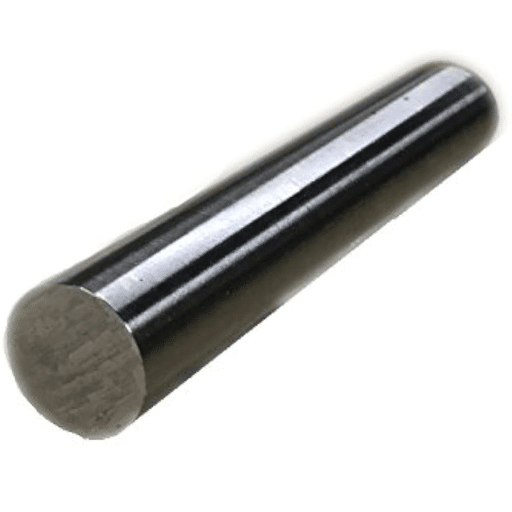
Choosing the right stainless steel round bar for your industry requires a thorough evaluation of several key factors:
- Grade Selection: Determine the appropriate grade based on the specific environmental and mechanical demands. For example, 304 is ideal for general-purpose applications, while 316 offers superior corrosion resistance in marine or chemical environments.
- Mechanical Properties: Assess tensile strength, hardness, and durability requirements to ensure the material aligns with operational needs, such as high-stress or load-bearing applications.
- Size and Dimensions: Specify the diameter, length, and tolerances necessary for compliance with design and operational criteria.
- Surface Finish: Select finishes like polished for aesthetic purposes or mill finish for functional applications to match end-use requirements.
- Compliance and Certifications: Verify that the material meets industry standards such as ASTM, ASME, or ISO to guarantee quality, reliability, and compatibility.
- Cost and Availability: Balance material costs with inventory availability to meet project budgets and timelines without compromising performance.
By addressing these considerations, you can ensure the stainless steel round bar selected optimally fulfills the functional, environmental, and economic demands of your application.
Factors to consider for customer selection
- Material Grade
Selecting the appropriate grade of stainless steel is critical to ensure compatibility with the intended application. For example, 304 stainless steel is ideal for general-purpose use due to its corrosion resistance and affordability, while 316 is recommended for environments with higher exposure to corrosive elements, such as marine or chemical industries. Assess the environmental conditions and mechanical requirements of your project before deciding on a grade.
- Dimensional Specifications
Dimensions such as diameter, length, and tolerance levels must align precisely with the application requirements. Industries with tight tolerances, such as aerospace or medical fields, often demand precision machining to meet exact standards. Verifying these specifications ahead of purchase ensures seamless integration into the final product or project.
- Mechanical Properties
Consider the necessary strength, flexibility, and durability of the stainless steel round bar for your application. This includes tensile strength, hardness, and load-bearing capacity under specific conditions. Attributes like heat resistance and ease of weldability should also be factored in depending on the use case.
- Surface Finish and Customization
Surface finishes impact both aesthetics and functionality. For high-visibility applications, polished or brushed finishes may be required, while industrial uses might prioritize finishes that enhance durability. Customization options like special coatings, cut-to-length services, or complex geometries can further refine material suitability.
- Regulatory Compliance and Certifications
Ensure the supplier’s materials comply with international standards—such as ASTM, ANSI, or ISO—to guarantee high quality and reliability. Some industries, such as medical or food processing, might require additional certifications like FDA compliance for product safety.
- Supplier Reliability and Lead Time
A dependable supplier with a proven track record in delivering high-quality stainless steel, coupled with short lead times, is vital for maintaining project timelines. Look for suppliers with robust inventory levels and custom manufacturing capabilities to support both standard and specialized needs.
Comparing 316 stainless steel and other grades
316 stainless steel, like other stainless steel grades, is distinguished by excellent resistance to corrosion, especially in marine or chemical settings that contain chlorides. This is due to increased amounts of molybdenum (2-3%) which increases the steel’s ability to resist pitting and crevice corrosion compared to 304 grade. Although 304 stainless steels are common because of their usefulness and cheap price, 316 can be used in more demanding applications that require additional strength. More economical grades, such as ferritic 430, do not offer the strength and resistance to corrosion provided by 316. In addition, while various grades of duplex stainless steel are stronger and more resistant to corrosion in harsher environments than 316, this grade is easier to weld and fabricate than duplex steel.
Tips on Ensuring High Resistance to Heat and Corrosion
- Material Selection: Choosing materials with inherent heat and corrosion resistance is critical. Alloys such as stainless steel (particularly grades with high chromium and nickel content) and superalloys like Inconel and Hastelloy are designed to perform under extreme conditions. Ceramic materials can also be employed for their excellent resistance to both heat and oxidation.
- Protective Coatings: Applying specialized coatings, such as ceramic thermal barrier coatings or anti-corrosion layers like epoxy resins, prevents material degradation. Metallic coatings using materials like aluminum or zinc are particularly effective for high-temperature and corrosive environments.
- Thermal Processing and Treatments: Heat-treating materials, such as through annealing or quenching processes, can enhance their resistance properties. These procedures alter the material’s microstructure, improving its performance under extreme conditions.
- Environmental Control: Minimizing exposure to aggressive environments, such as reducing contact with oxidizing agents or corrosive chemicals, helps extend material life. Employing insulation or isolation techniques can further protect materials from combined thermal and chemical stresses.
- Maintenance and Monitoring: Regular inspection and maintenance of materials used in high-heat and corrosive applications are essential to detect early signs of degradation. Proactive replacements or repairs ensure long-term reliability while reducing the risk of failure.
References
Frequently Asked Questions (FAQ)
Q: What is a 304 stainless steel round bar?
A: The 304 stainless steel round bar is an excellent steel alloy known for its high strength and corrosion resistance. It is made up of 8 percent nickel and 18 percent chromium, making it suitable for various applications where corrosion resistance is required.
Q: How is 304 stainless steel round bar typically used?
A: This stainless round bar is widely used in environments where corrosion resistance is required, such as in the fabrication of machine parts, supports, shafts, and other components. It is also used in the design and construction of structures that require high strength and durability.
Q: Can 304 stainless steel round bar be welded?
A: Yes, the 304 stainless steel round rod can be easily welded or formed, making it a versatile choice for various fabrication processes. It responds well to hardening by cold working, enhancing its mechanical properties.
Q: What sizes are available for 304 stainless steel round bars?
A: These round bars come in various sizes, including options like an inch diameter or 48 inches long. The inventory may include bars with outer diameters and lengths that fit specific project requirements.
Q: What are the mechanical properties of 304 stainless steel round bar?
A: The mechanical properties of 304 stainless steel include excellent strength and oxidation resistance when used in temperatures that are not extreme. It is also known for its ability to respond well to hardening by cold working, which enhances its performance in demanding applications.
Q: How does a 304 stainless steel round bar compare to an aluminum round bar?
A: While both materials are used for their corrosion resistance, 304 stainless steel offers higher strength and better performance in high-temperature environments compared to aluminum round bars. The choice between them depends on the specific requirements of the design and application.
Q: Is 304 stainless steel round bar suitable for high-temperature applications?
A: Yes, the 304 stainless steel round bar provides good oxidation resistance when used in temperatures that are not excessively high. It is suitable for various applications that require stability and durability at elevated temperatures.
Q: What is the significance of test reports for 304 stainless steel round bars?
A: Test reports are essential as they provide detailed information about the chemical composition, mechanical properties, and compliance with industry standards. These reports ensure that the round bar meets the necessary specifications for its intended use.
Q: Can 304 stainless steel round bar be used as an alternative to other materials?
A: Yes, due to its high strength, corrosion resistance, and ease of fabrication, the 304 stainless steel round bar is often used as an alternative to other materials like carbon steel or alloys that may not offer the same level of performance in specific environments.

